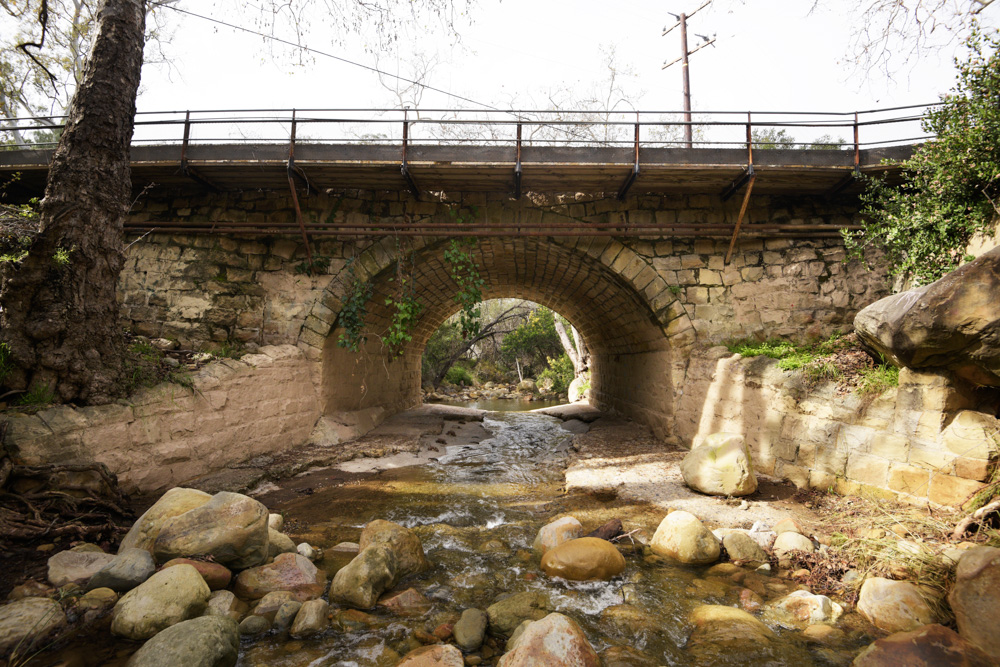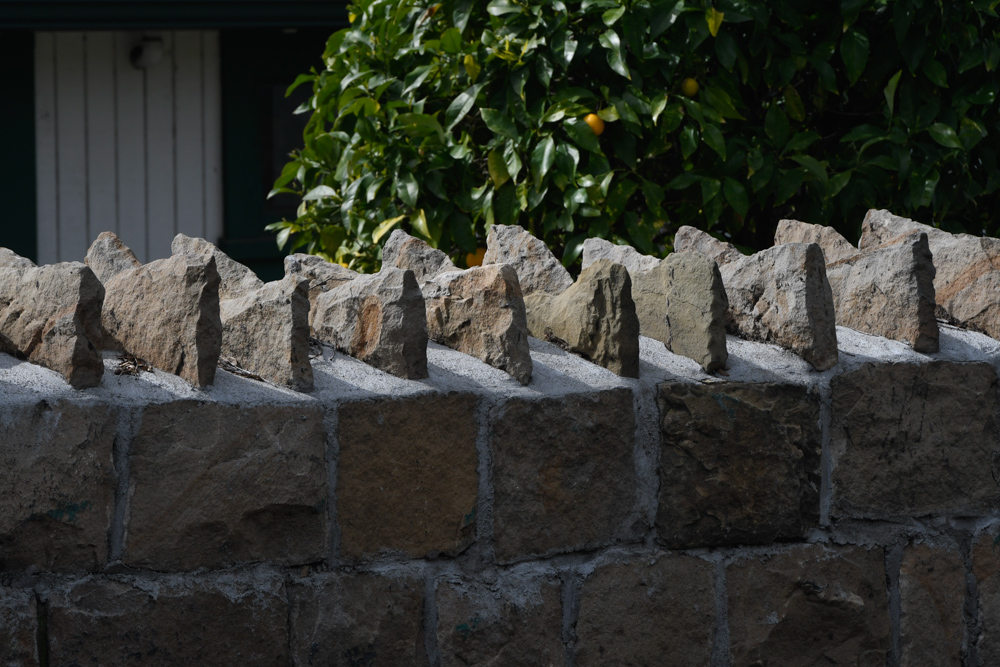Troubled Bridge over Mission Creek
Safety and Historicity Issues Concerning an Old Bridge

Who Does Mission Creek Bridge Project Benefit?
by Rosanne Crawford
The city’s proposed Mission Creek Bridge Project is based on greed, not safety.
The city discovered it could qualify for $11 million of federal funding under the Federal Highway Administration if it replaced the historic Mission Creek Bridge. The bridge project qualifies for funding only because the bridge is classified as “structurally obsolete,” which simply means that they do not build bridges this way anymore. According to Federal Bridge Inspection Reports, Mission Creek Bridge is structurally sound and does not have to be replaced.
Built in 1891, this bridge is protected as a city and county historic landmark as part of Mission Historical Park in the Pueblo Viejo district. It has been nominated for the National Historic Registry.
Leave the bridge alone! It did not even crack when the 1925 earthquake of 6.5 magnitude heavily damaged the nearby Mission and demolished most of downtown Santa Barbara. That’s close to the standards of Cottage Hospital, which is ready and equipped for a magnitude 7 earthquake.
The current proposal would change the scenic corridor by widening the road and encroaching into Rocky Nook Park’s tree- and boulder-lined entrance by approximately 19.5 feet.
These changes would threaten the historic bridge, the “stegosaurus wall,” and Mission Creek, considered the most viable stream in the city for steelhead trout restoration.
With taxpayers losing, who would gain? The city’s incentive is an $11 million federal taxpayer-funded project.
The Santa Barbara Museum of Natural History’s directors, both past and present, heavily support this. The museum stands to gain a proposed pedestrian bridge that would lead from the mission to the museum’s front door.
There is no established need for this project
Traffic engineers and statistics agree that widening a road makes it less safe by increasing speed. The trend all over the city is road narrowing, traffic-calming barriers, and devices to reduce speed. The scenic Mission Canyon corridor’s natural bends in the road, boulders, and trees create visual, as well as tangible, traffic-slowing effects.
Both current and proposed dimensions of the bridge on the Grant Application are the same: It would remain two lanes as it is currently. Evacuation access would not change.

Seismic retrofitting is quite a rabbit hole, not mandatory in this case as the bridge has passed safety inspections by federal inspector experts. There is no recommendation by Caltrans or the Santa Barbara Public Works Department for seismic testing. There’s good reason it’s not necessary or required; the testing itself can severely damage this historic stone masonry bridge if not done appropriately.
While the bridge is “structurally obsolete,” it is safer than most passageways in Santa Barbara. The Santa Barbara Police Department and Sheriff’s Office records show no deaths or serious accidents on record through the corridor, compliant with the city’s Vision Zero goal. From a statistical point of view, traffic engineers agree it’s not possible to make the corridor safer since you can’t get any less than zero.
Despite great public dissent, the first part of the $11 million plan was approved by the City Council on May 22, 2018, and approved by the Planning Commission for the city’s capital improvements list on January 24, 2019. Federal Bridge Inspection Reports prove that the current Historic Mission Creek Bridge is structurally sound and does not have to be replaced. Why was this plan approved?
Here are some sensible safety ideas that ultimately won’t cost taxpayers $11 million:
- Improve and maintain the existing pedestrian path.
- Add a pedestrian-activated flashing light at the existing crosswalk.
- Enhance disability access on existing pedestrian bridge.
- Improve the Mountain Drive intersection.
- Change the county’s current 35 mph speed limit sign, located at the Foothill end of the corridor, to 25 mph to match the city’s posted sign on the Los Olivos end of the corridor.
- Move power lines underground.
We need your help. Let your councilmember know that you support sensible, not wasteful, solutions. Sign the petition to save the historic Mission Creek Bridge at tinyurl.com/creekbridge.

It Benefits All Who Use Mission Canyon Road
by Luke Swetland
I would like to correct the mischaracterization made in the above about the Santa Barbara Museum of Natural History. The author of this piece suggests, as have members of the Coalition to Preserve Mission Canyon in other pieces published in the local press, that the “Matter of the Bridge” is solely the work of the museum and that the museum would be the sole beneficiary of any changes to the corridor.
Yes, the Museum of Natural History was a founding member of the Mission Canyon neighborhood group called Citizens for Safe Passage. Several years ago, the group began discussing what safety enhancements might be possible for pedestrians, bicyclists, and vehicular traffic moving through the area. Other key founding institutions were the Woman’s Club at Rockwood, Mt. Calvary, and Mission Santa Barbara. A number of private citizens who own property in the lower Mission Canyon corridor joined us, as did other Santa Barbara nonprofits, and three of the neighboring homeowners associations. All were supportive of the goals of Safe Passage, which was renamed the Mission Heritage Trail Association, to find safe solutions for the entry to Mission Canyon that preserve its historical and aesthetic elements. The museum remains an engaged member of this group and other neighborhood groups based on its commitment to being a good landowner and neighbor.
But let me be clear: Any changes that might happen in the corridor — to the roadway or to the bridge — will benefit all of the organizations and residents along the corridor. Those changes will ultimately better serve the needs of everyone who travels Mission Canyon Road. I frankly don’t understand the purpose of this revisionist history — thus I surmise that it can only be the result of a mean-spirited attempt to smear the name of a beloved and respected institution that has been honored to call Mission Canyon its home since 1916.
Luke J. Swetland is president and CEO of the Santa Barbara Museum of Natural History.



